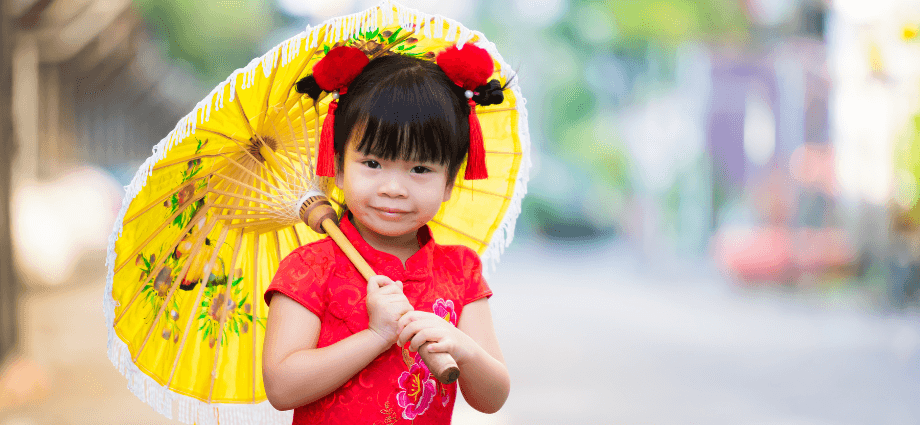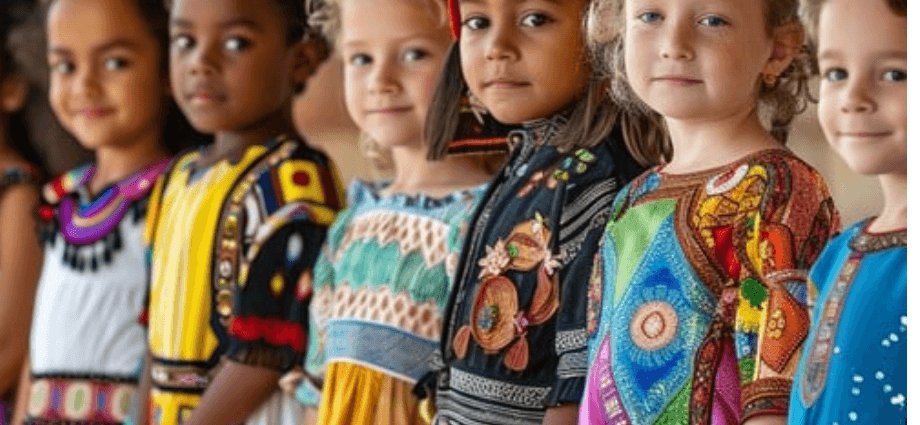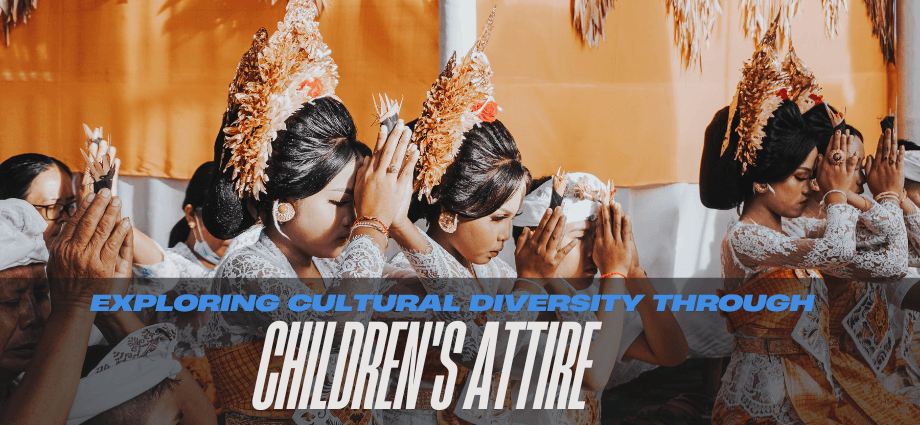Children’s clothing is more than just fabric stitched together to cover their bodies. It reflects their identity, culture, and heritage, showcasing a rich variety of traditions that span across the globe. Understanding the cultural significance behind children’s attire helps us appreciate the diverse world in which we live. Clothing can bridge gaps between different cultural backgrounds and offer a unique perspective on how we express our values. This article explores how children’s attire can be a powerful symbol of cultural diversity, shaping not just how children look but also how they understand the world.
The Role of Children’s Attire in Cultural Expression
Cultural Significance of Clothing
Clothing plays an important role in expressing cultural values, history, and customs. For many societies, attire isn’t just for protection or decoration; it carries deep symbolism, often telling stories about the people who wear it. In many cultures, the fabrics, colors, and designs used in children’s clothing can reflect important cultural milestones such as rites of passage or seasonal celebrations. For example, the brightly colored robes worn by children in parts of Africa often signify family heritage and social status.
- The vibrant prints and beads in African children’s clothing often represent unity and community.
- Traditional garments like the kimono in Japan have been passed down through generations, preserving the country’s cultural narrative.
- Ceremonial outfits worn by children during festivals, like Diwali or Chinese New Year, often symbolize hope, luck, and prosperity.
These cultural markers in clothing help preserve traditions while offering a glimpse into the historical experiences of a people.
Clothing as a Symbol of Identity
Children’s clothing plays a significant role in shaping their identity. For many, their clothes reflect their cultural background and familial history. In multicultural societies, children often wear attire that represents both their family’s heritage and their community’s diverse influence. For instance, a child of mixed descent might wear a traditional outfit from one side of their family while incorporating modern elements from another culture.
- Clothing can affirm ethnic pride and strengthen a child’s sense of belonging to their heritage.
- Cultural pride expressed through fashion is visible during cultural festivals where children wear traditional clothing.
- Parents may use clothing as a tool to teach their children about their cultural roots and to instill pride in their heritage.
When children wear culturally significant attire, they begin to understand the value of their background, helping them develop a sense of pride and belonging.
Traditional Clothing Across Cultures

African Children’s Attire
In many African cultures, children’s clothing is vibrant, colorful, and full of symbolism. Bright colors, intricate beadwork, and bold patterns are not only aesthetically pleasing but also carry deep cultural meanings. For example, in some regions, beadwork is used to signify a child’s age, social standing, or even their family’s lineage.
- Beaded accessories often have spiritual significance or are used to mark a child’s milestones.
- Fabric patterns are often connected to the local environment, such as nature, animals, or community.
- Clothing styles vary greatly across Africa, but common elements include loose-fitting garments designed for comfort and mobility.
African children’s attire is a direct expression of the culture’s values, providing insight into the family and society they belong to.
Asian Children’s Clothing
In many Asian cultures, traditional clothing is often worn for ceremonial purposes or significant life events. Outfits like the Japanese kimono, Chinese cheongsam, and Indian sari are more than just fashion statements; they embody centuries of tradition and family values. These garments are often passed down through generations and are considered symbols of respect and honor.
- The kimono is a symbol of Japan’s rich cultural heritage and is often worn during important celebrations such as the New Year or weddings.
- The cheongsam (or qipao) represents elegance and is often worn during festivals and family gatherings in China.
- Indian children’s clothing like the lehenga or salwar kameez is worn for cultural and religious celebrations, with each piece reflecting a particular region’s traditions.
Children’s clothing in Asia often reflects a balance of beauty and practicality, with designs created to honor both the past and the future.
European Children’s Traditional Attire
Across Europe, children’s attire varies from country to country, reflecting each nation’s rich cultural tapestry. In Scotland, for instance, children may wear kilts as part of national pride, while in the Netherlands, wooden clogs are still a common sight at folk festivals.
- Scottish kilts symbolize pride in heritage, often worn during national celebrations like St. Andrew’s Day.
- Dutch wooden clogs represent the country’s agrarian past and are often worn during traditional festivals.
- Festive attire in Eastern European countries includes embroidered shirts and dresses that are rich in symbolic patterns.
These traditional garments help instill a sense of cultural pride in children from an early age and offer a tangible connection to their historical roots.
Globalization’s Impact on Children’s Fashion
The Influence of Western Clothing
As the world becomes more interconnected, Western clothing styles have influenced children’s fashion across the globe. Brands like Nike, Disney, and Levi’s have become symbols of global consumer culture. While these clothes offer convenience and uniformity, they can sometimes overshadow or replace traditional garments, leading to a loss of cultural identity.
- Global brands are easily accessible, and children often adopt these mainstream clothing items.
- Western styles like jeans, T-shirts, and sneakers have become standard in many countries, regardless of cultural background.
- The rise of fast fashion has led to a decrease in the production of handmade, traditional clothing.
While Western clothing is increasingly popular, it is important to balance this with the appreciation of cultural garments to preserve a child’s connection to their heritage.
Mixing Traditions and Modern Trends
Many children today wear a blend of traditional and modern clothing, creating a fusion that reflects both global trends and local customs. For example, a child might wear a t-shirt with a graphic of their favorite character but pair it with traditional trousers or skirts. This merging of styles represents the dynamic and evolving nature of cultural identity in a globalized world.
- Hybrid clothing styles offer a modern twist on traditional outfits.
- Global trends are adapted to local fabrics, making traditional attire more wearable and fashionable.
- Fashion designers are increasingly integrating cultural elements into contemporary children’s wear.
This fusion of tradition and modernity is an exciting development that celebrates cultural diversity while adapting to the changing world.
Children’s Attire as a Tool for Cultural Education

Learning Through Clothing
Clothing can serve as a powerful educational tool, teaching children about diversity, respect, and the beauty of different cultures. Schools and communities can use clothing to introduce children to different traditions, helping them understand that each culture has its own unique story to tell. For example, children might participate in a “Cultural Day,” where they wear outfits representing different parts of the world, learning about the significance of the clothing they wear.
- Cultural festivals allow children to experience and learn about global traditions.
- School programs can encourage children to explore the history behind traditional clothing.
- Clothing exchanges or activities where children wear garments from different cultures can foster mutual respect and understanding.
Wearing culturally significant attire helps children build empathy and appreciation for people from diverse backgrounds.
Creating Inclusive Spaces for Cultural Expression
It is important to create environments where children feel free to express their cultural identities through their clothing. Schools, communities, and families can encourage a diverse range of attire that celebrates individual heritage while fostering inclusivity.
- Schools can adopt flexible dress codes that allow for cultural expression, such as allowing students to wear traditional clothing during holidays.
- Family gatherings and celebrations provide an opportunity for children to showcase their cultural attire, reinforcing their connection to their roots.
- Community events like parades or cultural fairs can help children share their heritage with others.
By supporting and promoting cultural diversity through children’s clothing, we create a more inclusive world where everyone’s identity is respected.
The Future of Cultural Diversity in Children’s Attire
Trends Toward Sustainable and Ethical Fashion
As the fashion industry becomes more aware of its environmental impact, there is a growing interest in sustainable and ethical clothing choices. Parents are increasingly turning to eco-friendly brands that incorporate traditional materials and designs, offering children’s attire that is both culturally significant and environmentally conscious.
- Sustainable fabrics like organic cotton and hemp are being used in children’s clothing.
- Ethical brands are incorporating cultural elements in their designs while ensuring fair labor practices.
- Upcycling and repurposing traditional garments to create new styles is gaining popularity.
These trends not only protect the environment but also preserve cultural heritage by keeping traditional crafts alive.
Technology’s Influence on Cultural Expression Through Clothing
Technology is also playing a role in how cultural diversity is expressed through clothing. Virtual clothing and digital fashion are opening new avenues for children to explore different cultures in creative ways. Digital platforms allow children to design outfits that represent their heritage, blending technology with tradition.
- Virtual platforms enable children to explore cultural attire through digital fashion experiences.
- Interactive clothing with cultural patterns is becoming popular in video games and augmented reality.
- Social media spreads awareness of cultural fashion trends globally, allowing children to connect with others who share their heritage.
These advancements show how technology can amplify cultural expression, allowing children to engage with diverse traditions in new, innovative ways.
Conclusion
Children’s attire is a powerful expression of cultural diversity. It provides an opportunity for families to pass down their traditions while allowing children to connect with their heritage. As the world becomes more interconnected, it is important to celebrate cultural diversity through fashion. By embracing both traditional and modern elements

